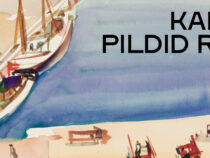16.09.2023–25.02.2024
On 16 September, the exhibition “Visual Arts in Tartu in the 1960s” opens in the Tartu Art Museum, focusing on Tartu as the capital of Estonian painting.
The impetus for this exhibition is the role played by Tartu as the capital of Estonian painting up until the end of the 1960s, when people started talking about the emergence of a new generation of young painters in Tallinn. During this decade, people travelled to Tartu to visit the annual exhibitions of Tartu art, which had been held since 1955, or other solo and group exhibitions organised by the Tartu Art Museum.
The red brick building at Vallikraavi 14, which housed the art museum from the end of 1945 to 2018, was the first destination for art lovers in the city, but exhibitions of contemporary art and solo exhibitions were increasingly also on display at the Tartu Artists’ House (currently the Tartu Art House) which was built in 1959.
The revival of art in Tartu was associated with the participants in the museum’s first group exhibition in 1964: Efraim Allsalu, Kaljo Polli and Ilmar Malin. For Allsalu and Polli, the 1960s were their creative high point. Besides Malin, whose works were developing towards surrealism, the most radical approaches, e.g. abstract expressionism, assemblage, op art and pop art installation, were found in the works of Lola Liivat-Makarova and Kaljo Põllu.
The contribution of painting from Tartu to the Estonian art of the “Golden Sixties” was immense. Compared to painting, sculpture and printmaking were more modest, even in terms of the number of artists. Despite this, Anton Starkopf continued working intensely even in the last years of his life, and the traditions of Estonian sculpture were developed by young artists who studied under Johannes Hirv and Martin Saks at the Tartu State Art Institute. In printmaking, Kaljo Põllu rose to prominence along with Helgi Hirv. The artists of the “Tartu Circle”, who were associated with Ülo Sooster, did find appreciation at exhibitions, but their more radical works were shown to wider audiences only during their solo exhibitions in the 1970s, and their actual contribution to the artistic innovations of the 1960s has been highlighted by the exhibitions and research of recent decades. The overall image of art in Tartu in the 1960s was determined by the artists who graduated from the Pallas Art School immediately before or during World War II. Some of these, however, such as Aleksander Vardi, Alfred Kongo and Elmar Kits, enjoyed a second creative blossoming during the decade.
Curator: Mai Levin
Exhibition design: Mari Kurismaa
Graphic design: Inga Heamägi
Coordinator: Kristlyn Liier
Exhibition team:
Indrek Aavik, Richard Adang, Nele Ambos, Maarika Espenberg, Indrek Grigor, Joanna Hoffmann, Mare Joonsalu, Margus Joonsalu, Viktor Kiss, Annegret Kriisa, Katrin Lõoke, Tõru-Tõnn Parts, Jaanika Peebo, Anti Saar, Kristel Sibul, Peeter Talvistu, Kristo Tamm, Ago Teedema, Urmo Teekivi, Mae Variksoo
Owners of exhibited artworks:
Eesti Kunstimuuseum
Eesti Rahva Muuseum
Tartu Kunstimuuseum
Thanks: Ivar-Kristjan Hein, Darja Jefimova
Exhibition views
Photos: Madis Katz











